Media
Summary
Scientists using Hubble to track storms on Neptune found that a current storm has reversed direction and possibly shed a fragment. Plus, an update on Hayabusa2’s sample return, a non-technological radio emission from an exoplanet, This Week in Sky Watching, and more!
Transcript
This is the Daily Space for today, Thursday, December 17, 2020. I am your host, Dr. Pamela Gay.
And I am your host, Beth Johnson.
And we are here to put science in your brain.
Before we jump to the news, we’d like to congratulate the Chinese space program and the Chang’e 5 mission team for successfully retrieving a sample from the lunar surface and returning it to Earth. This is the first new Moon sample since 1976.
Launched on November 23, this mission just got it done, arriving on the Moon after five short days, digging as deep as two meters, and lifting off from the lunar surface on December 3. During a press conference after landing, Wu Yanhua, Vice Administrator of the China National Space Administration, said that China will be sharing samples with scientists around the world in accordance with the 1967 Outer Space Treaty, a multilateral agreement governed by the United Nations. Journalist Andrew Jones points out that this may be a dig at the Artemis Accords, which are bilateral agreements with the United States that NASA is pushing and that China and Russia haven’t signed. This is going to be a political story to watch. To learn more about the Artemis Accords, check out Monday’s episode of Astronomy Cast.
And now, let’s get back to science.
First up, I bring you a story of how science can suddenly match simulations and how important telescope time really is.
In yet another interesting presentation from AGU’s Fall Meeting, scientists used the Hubble Space Telescope to image and track a storm on the surface of Neptune. The farthest gas giant has giant storms just as Jupiter does, but it turns out that Neptune’s storms don’t last nearly as long. In fact, they tend to disappear after a couple of years. And the only reason we know this is because we’ve been able to use Hubble to take images of Neptune. Otherwise, a lot of people would think the Great Dark Spot seen by Voyager 2 back in 1989 was still around.
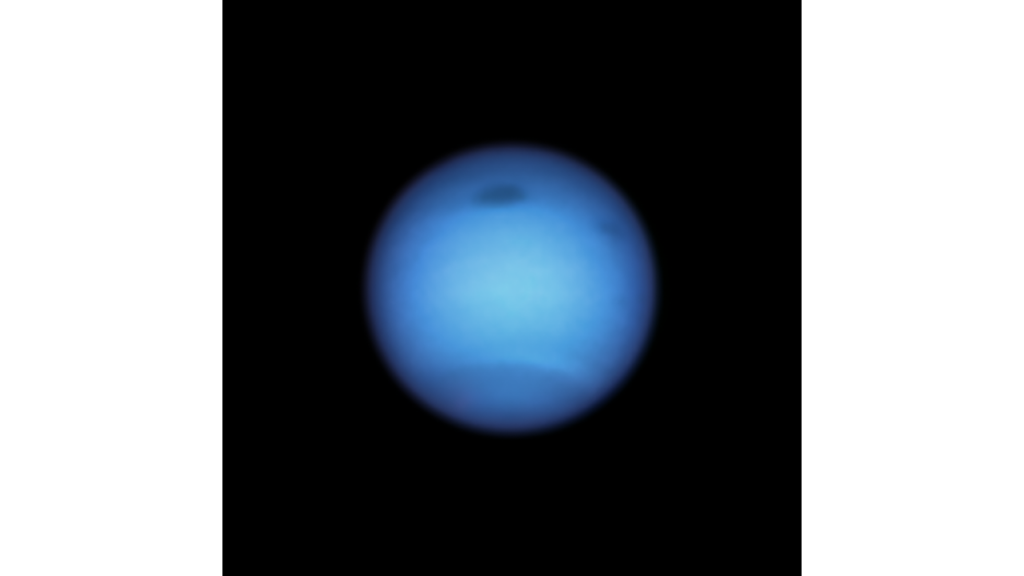
It’s not. Since Hubble went up, it has seen four such storms come and go. Until now. This latest storm did something unusual. Not only is it still there, but it has actually reversed direction and possibly spun off a remnant.
The current storm was first observed in Neptune’s northern hemisphere back in 2018. This year is the two-year mark, which meant new images should have shown the storm dissipating. Basically, storms on Neptune drift toward the equator over time, where the Coriolis effect — the forces that make storms rotate, like hurricanes — is much weaker. Storms are unable to remain coherent, and they break apart and disappear.
However, what scientists found in August of this year was that the storm, which had been seen making its advance toward the equator, was now making its way back north again. Not only that, there was a smaller dark storm that was now moving away from the original storm. No one is certain that the small storm spun off from the bigger one, but it does match some simulations that show a similar type of disruption.
And here is where the telescope time becomes important. It’s not easy to get telescope time. There are proposals and scheduling and targets and considerations of what lines of research are more pressing than others. The pictures taken by Hubble for this study are a part of the Outer Planet Atmospheres Legacy (OPAL) program, led by Amy Simon at NASA Goddard. This program takes annual pictures of the outer planets that allow us to map their surfaces on a regular basis and allows researchers to catch fleeting events they would not see otherwise.
As Simon said: We wouldn’t know anything about these latest dark spots if it wasn’t for Hubble. We can now follow the large storm for years and watch its complete life cycle. If we didn’t have Hubble… we wouldn’t have known about the four other spots Hubble discovered.
Hubble is a gem. Thirty years in, and we are still making discoveries and advances in our understanding of our solar system based on the images it takes.
Science is a slow process, and sometimes you have to seriously celebrate the intermediate steps while you wait for the final results.
Hayabusa2’s planning started in 2007. It finally launched in 2014 but didn’t get to Ryugu until mid-2018. It is now, well, 2020, and thirteen years after conception, we have the sample back on Earth, and it has finally made it to its lab at the JAXA Sagamihara Campus. All possible due diligence is being done to make sure no Earth contaminates — including air — mix with the sample, and so far things are going well.
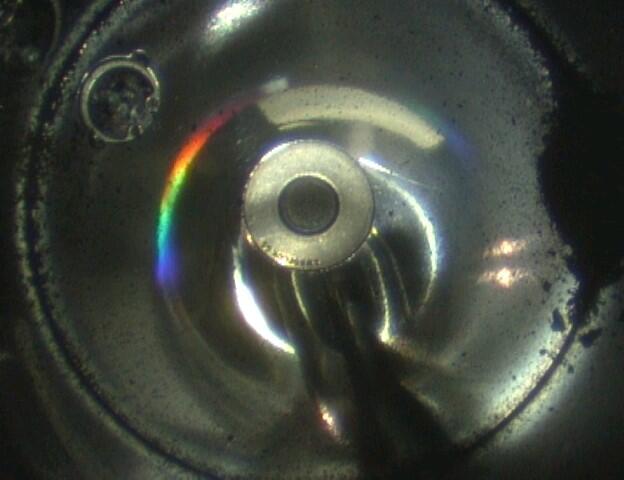
Initial analysis of the gases in the sample container seems to confirm the gases are from the samples outgassing. Put another way, material from Ryugu was captured in a container that was otherwise vacuum-filled. That sample contained some volatiles — gases and ices that were trapped in the rocks — and during the return to Earth, those volatiles exited the sample and hung out in the sample chambers where they can now be studied. This is the first time a sample of gas-state material has been returned from another world.
And while the sample canister itself hasn’t yet been opened, scientists are getting a sneak peek of what to expect thanks to dark grains captured on the entrance to the sample catcher. These grains are a nice sample by themselves and appear to be nearly black in color. This is a reminder that asteroids can be really dark, really hard to see, and something we need to literally watch out for. The asteroids hurled the first rocks at us, but now, Japan has more than once gone to battle, taken a sample, and returned it to Earth. I can’t wait to see what they find next.
Let me preface this next story with an important caveat: the story you are about to hear is not about aliens. I repeat: this story is NOT about aliens.
But it is about a radio signal from an exoplanet.
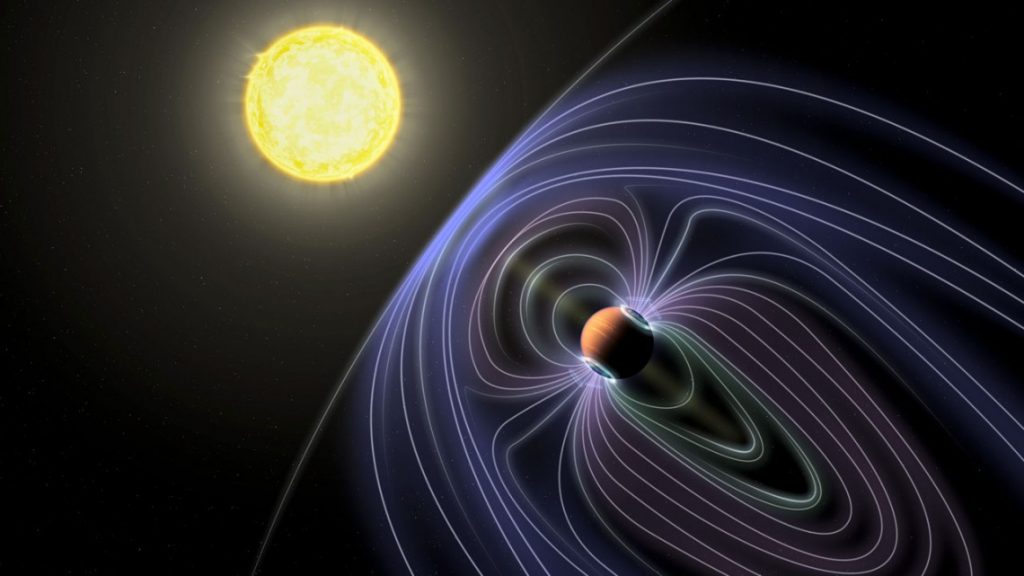
A team of researchers led by Jake Turner of Cornell University recently published a new paper in Astronomy & Astrophysics that explains how they detected a radio emission from an exoplanet in the Tau Boötes system, some 51 light-years away. This detection is another of those “the observation matched the theory” bits of science we delight in around here.
Turner explains: The signal is from the Tau Boötes system, which contains a binary star and an exoplanet. We make the case for an emission by the planet itself. From the strength and polarization of the radio signal and the planet’s magnetic field, it is compatible with theoretical predictions.
To make this detection, the team first turned their radio eyes toward Jupiter to observe our largest planet’s radio emissions. Then they scaled up those emissions to give themselves a baseline for detecting a similar planet in a distant system, between 40 and 100 light-years away. With that information in hand, Turner and his colleagues poured through almost 100 hours worth of observations from the Low Frequency Array (LOFAR) in the Netherlands, eventually finding the signature of a hot Jupiter in Tau Boötes.
Turner goes on to explain: Observing an exoplanet’s magnetic field helps astronomers decipher a planet’s interior and atmospheric properties, as well as the physics of star-planet interactions. The magnetic field of Earth-like exoplanets may contribute to their possible habitability by shielding their own atmospheres from solar wind and cosmic rays, and protecting the planet from atmospheric loss.
I should note, of course, that there is some uncertainty with this detection, and follow-up observations are planned using multiple radio telescopes. Good luck, team!
The line between a giant gas planet and a tiny brown dwarf star is ill-defined and much argued over, and this next story points toward why. The headline of the National Centre of Competence in Research, PlanetS office reads, “A pair of lonely planet-like objects born like stars,” but in the press release, these objects are described as brown dwarfs, which are a kind of star. I feel comfortable in saying that no one and everyone is partially right in describing this research.
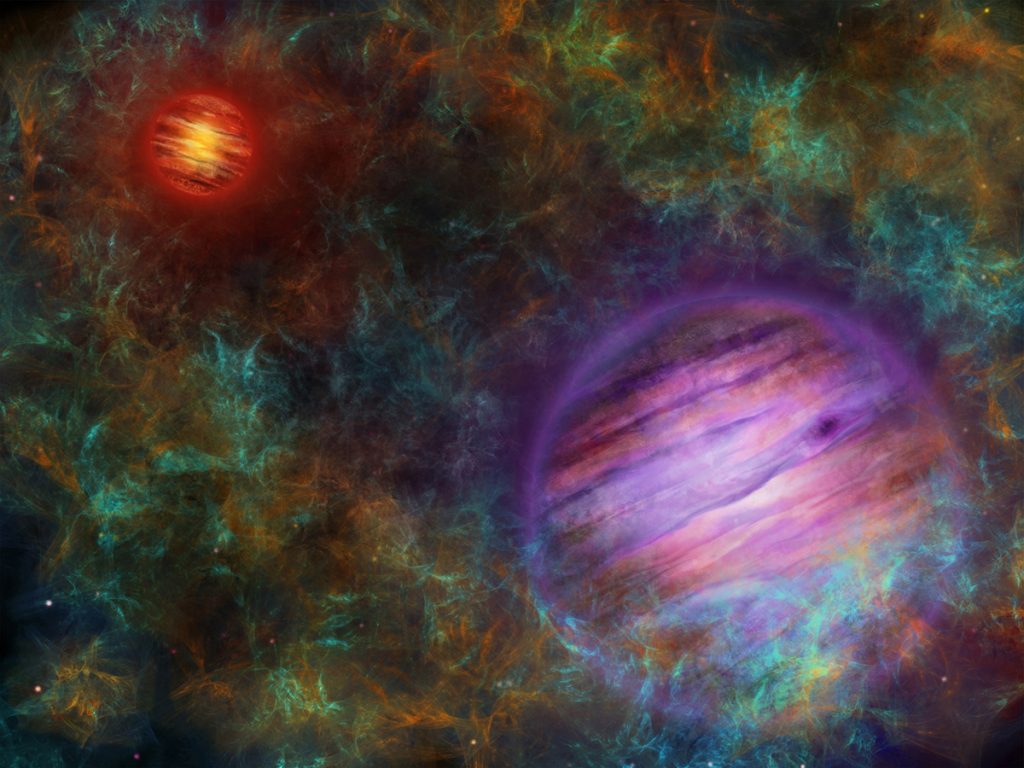
Stars are defined as objects that at some point in their evolution have nuclear reactions in their core due to the fusion of some form of hydrogen that may progress to burning heavier and heavier elements. While objects larger than 100 Jupiter masses can burn regular hydrogen, which has just a proton, and live for trillions of years, objects down to maybe 11 Jupiter masses only burn heavier forms of hydrogen — deuterium and tritium, which have extra neutrons — for brief periods of millions of years before the just burn out.
So, if an object has nuclear reactions, it is a star. Beyond that, it is also thought that only stars form via the collapse and fragmentation of giant molecular clouds of gas, while planets form in a debris disk that swirls around the core of one of these collapsed cloud fragments.
That was a lot of background, but it is needed to understand this weirdo system, which is described in a new paper in The Astrophysical Journal Letters with lead author Clémence Fontanive.
Designated CFHTWIR-Oph 98, or just Oph 98 for short, this system contains two small objects that are 8 and 15 Jupiter masses in size. While the larger of these two may have had nuclear burning, the smaller one probably didn’t. These two objects are just barely holding onto each other gravitationally and are separated by a distance five times greater than the Sun-Pluto distance. This seems to imply that — assuming this is how they formed — both objects formed as collapsing fragments in a molecular cloud — formed like stars — and ended up creating the lowest mass binary system to date.
This system may be two planets if it turns out burning didn’t happen in either object. It may be two brown dwarfs if burning can happen at a lower mass than consensus currently thinks, or it could be a brown dwarf and a giant gas giant. However you define these objects, they are small and they are mighty in the amount of head-scratching they are going to require to be figured out.
Earlier this week, we spoke with Planetary Science Institutes’s Dr. Dan Berman about how a covering of dust can help preserve glaciers, particularly on Mars. It turns out that, on Earth at least, glaciers can also protect us from that same dust.
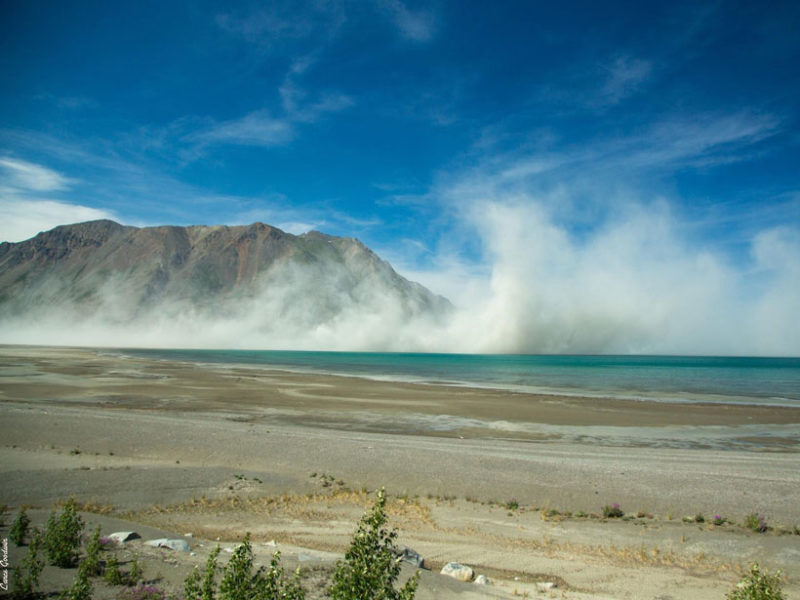
In new research presented at AGU’s Fall Meeting, scientists collected airborne dust that was released into the atmosphere after the swift melting of a glacier in northern Canada. The glacier melted so quickly that it changed the course of the nearby Slims River. The river’s previous bed dried out, and all the fine particulates that had been in the water were now airborne.
The goal of the study was to gain an understanding of how aerosols impact both local air quality and global climate patterns. As more and more glaciers melt away with terrifying haste, more and more of this dust will be released into the atmosphere.
The results were… not good. The dust was incredibly fine, even finer than dust found in the global dust belt containing places like the Sahara and Gobi. When the wind blew, the air quality exceeded acceptable levels set by the World Health Organization and became a public health hazard. Even worse, a sandblasting effect from larger airborne particles caused more fragile arsenic-containing particles to break down into very fine dust, which also became airborne.
And if that weren’t enough, all of that dust being released into the atmosphere is now free to create dust clouds. Researchers aren’t entirely sure just what effect those clouds will have on global temperatures, and more research is needed. The team is hoping to return to their far-northern collection sites and conduct a further investigation into just how the dust interacts with water clouds and how it scatters and absorbs sunlight. Both of these processes could have a wider impact on the climate.
One of the more curious things about our planet is the wandering of the magnetic north. At any given moment, the pointing of your compass is only mostly pointing toward our planet’s rotational axis. Currently, the north pole is racing toward Siberia after hanging out in Canada since at least 1831, when it was located by explorer James Clark Ross. The accelerating motion of the pole has made many wonder if our world is about to experience a magnetic flip so that your compass will change where it points, while our planet’s orientation otherwise remains unchanged.
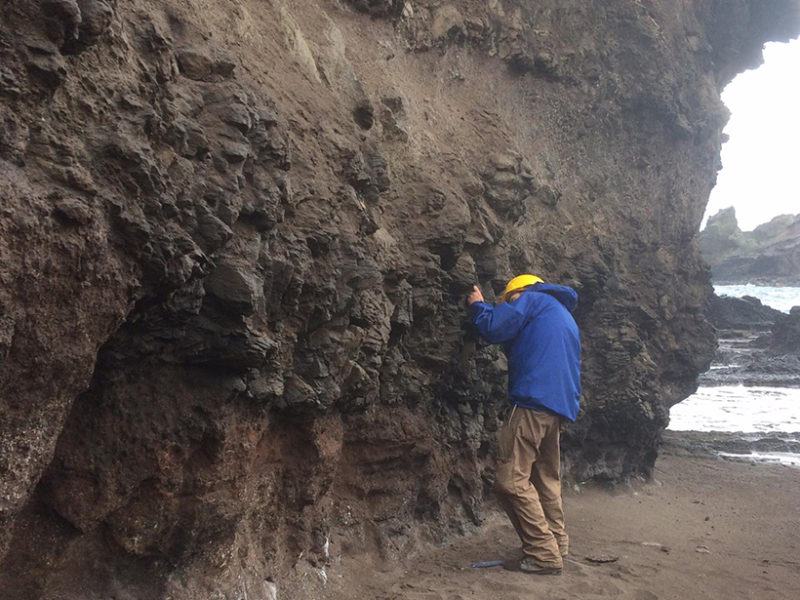
It’s postulated that during a magnetic field flip, we’ll have a period of less protection from high energy particles and the solar wind, and generally it’s thought such a flip could be problematic for civilization as we know it. Trying to figure out just how much danger we’re in has become a topic for a lot of folks, and a new study looked at a new set of variables that seem to indicate that we’re probably ok for now.
Lava is often rich in metals that will orient with the Earth’s magnetic fields as they solidify. The amount of orientation is related to the strength of the magnetic field. This means that the lava fields around long active volcanoes and the newly forming material along the mid-ocean divide all contain a record of the Earth’s magnetic field strength and orientation over time. In general, researchers have looked for a relationship between how the magnetic field moves and how likely it is to flip, and a relationship just hasn’t been established.
Now, in new results presented at AGU by Courtney Sprain, an international team looks instead for a relationship between the strength of the magnetic field and the likelihood it will flip. This, it turns out, is the relationship to watch. When Earth’s magnetic field gets weak, it is gearing up to turn over, and that is the signal that things are about to get rough.
For now, our magnetic field is strong, and we should be fine, and we have a cool new set of variables to study through the geologic record.
And now, our new weekly feature, This Week in Sky Watching. Everything this next week seems to be happening on the 21st.

First up, the peak of another meteor shower is upon us. While not as well known as the Geminids or as active, the Ursids can still put on a bit of a show as we near the peak of the shower. And that peak is December 21st. (We warned you everything was happening then.)
Technically, the peak may actually be the morning of the 22nd, but a day on either side should still provide you with a few meteors. In other words, it’s not a shower to expect a lot out of, with only about 5-10 meteors an hour, and you’ll need dark skies. But hey, even if that doesn’t work out, those darn Geminids are still going!
Remember to bundle up and go someplace dark, then kick back, be patient, and you can enjoy the view.
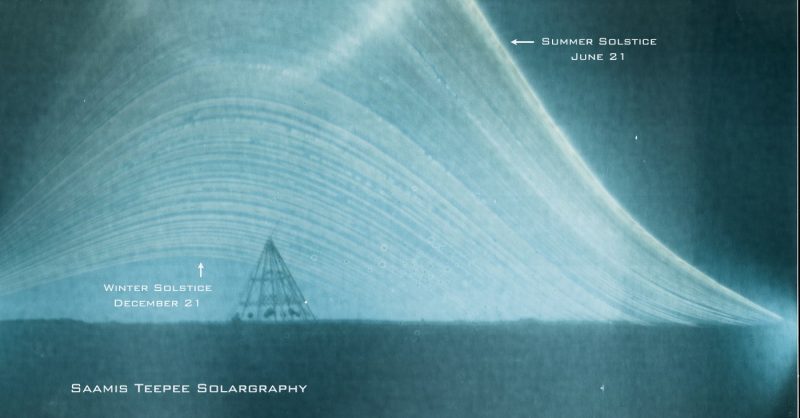
When Beth and I say “bundle up” we are showing our northern hemisphere bias. Ally, Annie, and I all had snow this week, and even Northern California hasn’t been all that warm for Beth. For those of you in the southern hemisphere, well, we are sad to say you need to wear clothes unless you are in someplace really isolated. We know it’s hot, but…
No matter what season you are experiencing, things are getting ready to make a change. December 21 is also the southern solstice, that day when the Sun hits its southernmost location in the sky before turning around and heading north again. This means those of us in the north will start getting more sunlight finally, and those of you in the south can look forward to earlier sunsets and shorter days. Unfortunately, thermal conditions lag, and February is likely to be the coldest month for us and the hottest month for those of you down under.
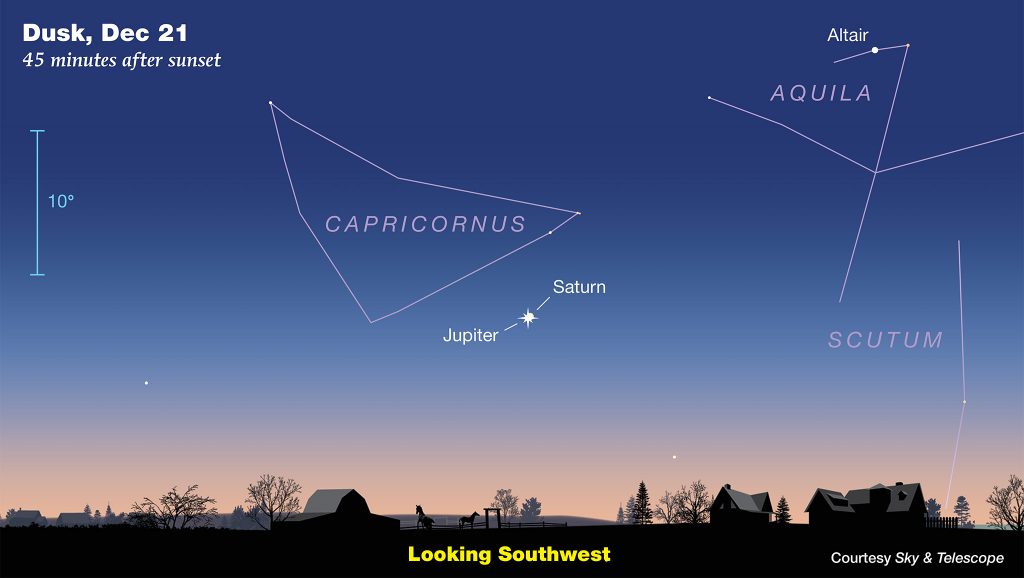
Finally, we remind you once again that Jupiter and Saturn are nearing what everyone is calling their Great Conjunction. Also happening on the 21st, the two planets will be so close together in the sky that they will appear as one bright star. Lots of people have been taking pictures of the progression as the pair move closer and closer. This is a once-in-800-years event, so make sure you take a look.
You’ll want to look to the southwest about 45 minutes after sunset and about 15 degrees above the horizon — slightly farther up than the width of your fist while held at arm’s length. The view should be spectacular, so long as you don’t have any pesky clouds in the way. Nobody buy new astronomy gear this next week, please!
This has been the Daily Space.
Learn More
Dark Storm on Neptune Reverses Direction, Possibly Shedding a Fragment
Updates on Hayabusa2 Return Sample Mission
- JAXA press release (landing)
- JAXA press release (gas sample)
Cornell postdoc detects possible exoplanet radio emission
- Cornell University press release
- “The search for radio emission from the exoplanetary systems 55 Cancri, upsilon Andromedae, and tau Boötis using LOFAR beam-formed observations,” J.D. Turner et al, to be published in Astronomy & Astrophysics (preprint)
A pair of lonely planet-like objects born like stars
- NCCR PlanetS press release
- “A Wide Planetary-mass Companion to a Young Low-mass Brown Dwarf in Ophiuchus,” Clémence Fontanive et al., 2020 December 16, The Astrophysical Journal Letters
Dust from Receding Glaciers May Have Major Atmospheric Impacts
A Robust Proxy for Geomagnetic Reversal Rates in Deep Time
This Week in Sky Watching: Ursid meteors peak around the solstice
This Week in Sky Watching: December solstice
This Week in Sky Watching: Upcoming close conjunction of Jupiter and Saturn
Credits
Written by Pamela Gay and Beth Johnson
Hosted by Pamela Gay and Beth Johnson
Audio and Video Editing by Ally Pelphrey
Content Editing by Beth Johnson
Intro and Outro music by Kevin MacLeod, https://incompetech.com/music/


 We record most shows live, on Twitch. Follow us today to get alerts when we go live.
We record most shows live, on Twitch. Follow us today to get alerts when we go live.